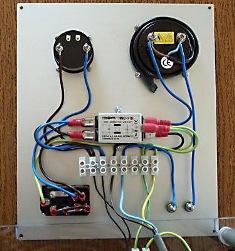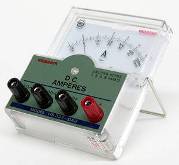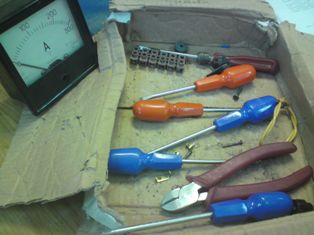What does the accuracy class of the measuring device mean?
Accuracy class of the measuring instrument — this is a generalized characteristic determined by the limits of the permissible basic and additional errors, as well as other properties that affect the accuracy, the values of which are laid down in the standards for certain types of measuring instruments. The accuracy class of measuring instruments characterizes their properties in terms of accuracy, but is not a direct indicator of the accuracy of measurements made with these instruments.
To estimate in advance the error that this meter will introduce into the result, use normalized error values... They mean maximum errors for this type of meter.
The errors of individual measuring devices of this type may be different, have systematic and random components that differ from each other, but in general, the error of this measuring device should not exceed the standardized value. The limits of the main error and the coefficients of influence are entered in the passport of each measuring device.
The main methods of standardizing the permissible errors and determining accuracy classes of measuring instruments are established by GOST.

If the value of the accuracy class indicated on the scale is surrounded by a circle, for example 1.5, it means that the sensitivity errorδc= 1.5%. This is how the errors of scale converters (voltage dividers, measuring shunts, measurement of current and voltage transformers, etc.).
This means that for a given measuring device the sensitivity error δs =dx / x is a constant value for each value of x. Limit of relative error δ(x) is a constant and for any value of x it is simply equal to the value δs, and the absolute error of the measurement result is defined as dx =δsx
For such meters, the limits of the operating range within which such rating is valid are always indicated.
If on the scale of the measuring device the number of the accuracy class is not highlighted, for example 0.5, it means that the device is normalized by the reduced error of zero δo = 0.5%. For such devices, for any values of x, the absolute zero error limit dx =do = const and δo =do / hn.
With an equal or power scale of a measuring device and a zero mark at or outside the edge of the scale, the upper limit of the measuring range is taken as xn.If the zero mark is in the middle of the scale, then xn is equal to the length of the measuring range, for example, for a milliammeter with a scale of -3 to +3 mA, xn = 3 -(-3) = 6 A.
 However, it would be a gross mistake to believe that an ammeter with an accuracy class of 0.5 provides a measurement error of ± 0.5% over the entire measurement range. The value of the error δo increases in inverse proportion to x, that is, the relative error δ(x) is equal to the accuracy class of the measuring device only at the last scale mark (at x = xk). At x = 0.1xk, this is 10 times the accuracy class. When x approaches zero δ(x) tends to infinity, that is, it is unacceptable to make measurements with such devices in the initial part of the scale.
However, it would be a gross mistake to believe that an ammeter with an accuracy class of 0.5 provides a measurement error of ± 0.5% over the entire measurement range. The value of the error δo increases in inverse proportion to x, that is, the relative error δ(x) is equal to the accuracy class of the measuring device only at the last scale mark (at x = xk). At x = 0.1xk, this is 10 times the accuracy class. When x approaches zero δ(x) tends to infinity, that is, it is unacceptable to make measurements with such devices in the initial part of the scale.
For meters with a sharply uneven scale (for example, ohmmeters), the accuracy class is indicated in parts of the length of the scale and is indicated as 1.5 with the designation below the digits of the "angle" sign.
If the designation of the accuracy class on the scale of the measuring device is given in the form of a fraction (for example, 0.02 / 0.01), this indicates that the reduced error at the end of the measurement range δprc = ± 0.02%, and in zero range δprc = -0.01%. Such measuring instruments include high-precision digital voltmeters, DC potentiometers, and other high-precision instruments. Then
δ(x) = δto + δn (xk / x — 1),
where xk is the upper limit of the measurements (the final value of the scale of the instrument), x is the measured value.

